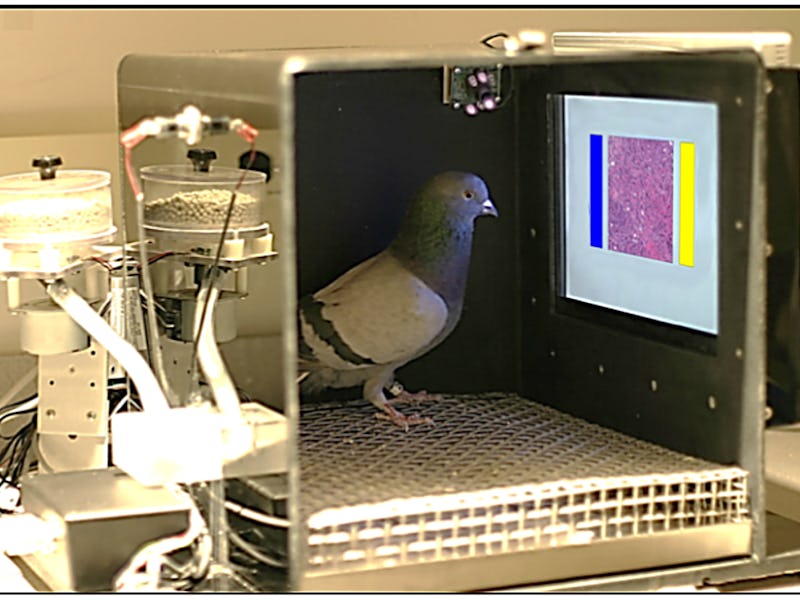Pigeon Become Latest Animal Pathologists, Diagnose Breast Cancer
Lab rats with wings make themselves useful.

Pigeons can be trained to tell the difference between cancerous and non-cancerous breast tissue by looking at it. Turns out that pigeons have amazing visual systems that are similar in many ways to our own, but considerably more powerful.
“Research over the past 50 years has revealed that pigeons can be prodigious discriminators of complex visual stimuli,” according to the new pigeon study, published in PLOS ONE. “Pigeons’ visual memory is also outstanding, as they can recall more than 1,800 images.”
As for this new study, pigeons were given sets of slides showing breast tissue that was either malignant or benign. They sat in their little diagnostics lab looking at a touch screen that would display each image one at a time. They would then peck either the blue rectangle on the left side of the screen, or the yellow on the right. If they hit the right one, a food pellet would drop to them.
Samples of benign and malignant breast tissue.
Over 15 days or training, the pigeons’ accuracy improved from 50 to 85 percent, which is remarkable. And it wasn’t that they were just memorizing the images: When they were given a new set of images they hadn’t seen before, their performance was just as good. So, like human pathologists, the pigeons actually managed to learn the visual patterns associated with cancerous growths. The mistakes the pigeons made were not random — the birds appear to have been confused when a malignant sample had a similar visual feature to a benign one, which is to say they struggled with the same stuff human pathologists struggle with.
So, will breast cancer one day be diagnosed exclusively by pigeons, saving human resources for more complex tasks? It’s possible, but not likely.
“Pigeons are not the only animals to have shown abilities relevant to medical diagnoses,” write the authors. “Other animals with special perceptual skills have been proposed as front-line diagnosticians, for example, dogs sniffing out prostate or ovarian cancer or giant African pouched rats detecting tuberculosis. We are not (yet) proposing such a role for pigeons. Instead, we have shown that pigeons can be effective, tractable, relevant, informative, statistically interpretable, and cost-effective medical image observers.”
The work could help guide future research into human visual systems, or could lay the groundwork for better computer diagnostic tools, they conclude.